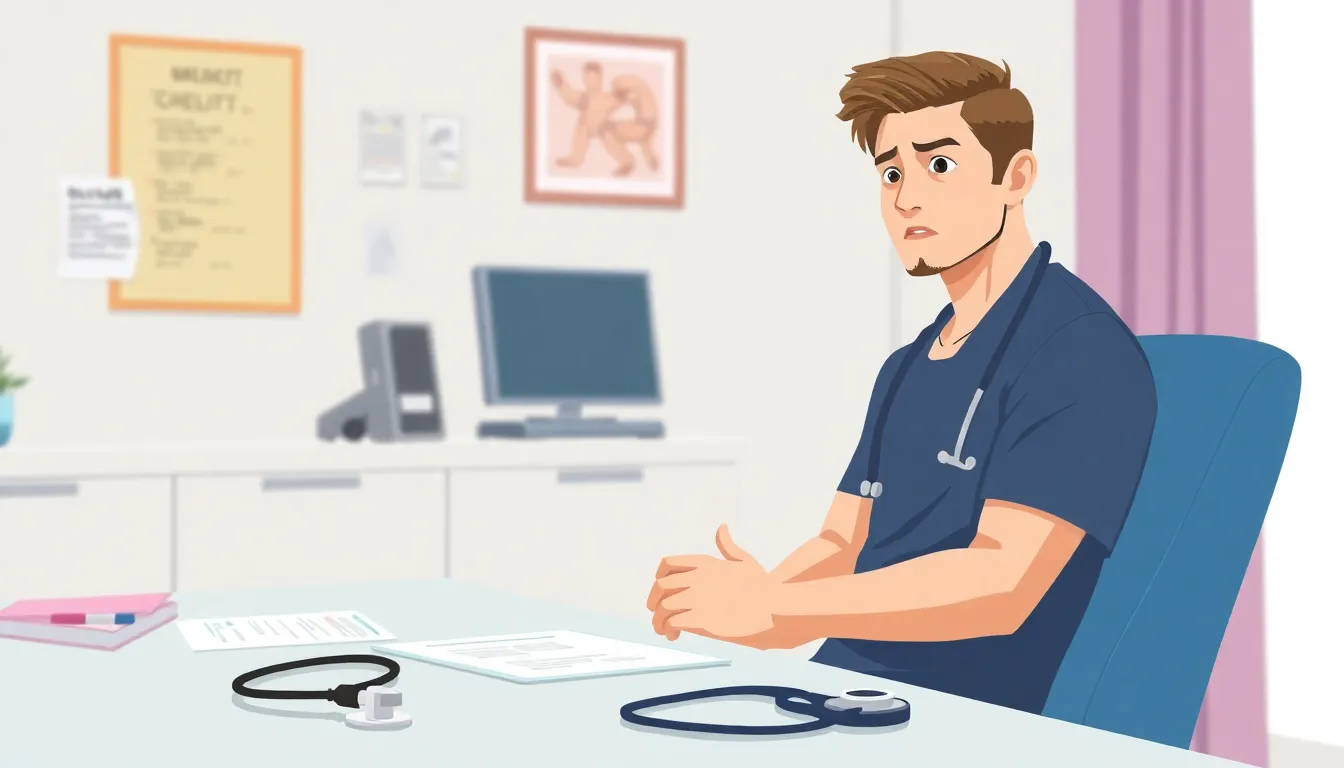Shingles isn’t just a pesky problem for your grandparents; it can strike young adults too. Imagine waking up one day with a rash that feels like a thousand tiny fire ants throwing a party on your skin. Not exactly the kind of excitement anyone wants! Shingles, caused by the same virus that gives you chickenpox, can hit when you least expect it, even if you’re in your twenties or thirties.
Table of Contents
ToggleUnderstanding Shingles in Young Adults
Shingles commonly affects young adults, manifesting as an unexpected viral infection. This condition arises from the varicella-zoster virus, which causes chickenpox. After a person recovers from chickenpox, the virus can become dormant in their nervous system and reactivate years later.
Symptoms include a painful rash, often accompanied by burning or tingling sensations. Typically, the rash appears on one side of the body, resembling clusters of blisters. Pain might precede the rash, creating discomfort that can last for weeks or even months.
Young adults are at risk, especially if they lack immunization against chickenpox. Vaccination significantly reduces the chance of developing shingles. According to the Centers for Disease Control and Prevention, shingles occurs in approximately one in three people during their lifetime.
Complications can also arise in young adults, such as postherpetic neuralgia, a condition causing chronic pain in the area where shingles occurred. While complications are more common in older adults, they can still affect those in their twenties and thirties.
Stress, a weakened immune system, or certain medical conditions can trigger an outbreak in young adults. Monitoring one’s health can help identify signs early, allowing for prompt medical intervention. Antiviral medications often reduce the severity and duration of illness when administered quickly.
Understanding the risks and symptoms of shingles is essential for young adults to manage their health effectively. Recognizing these factors can lead to better prevention and treatment strategies, ultimately reducing the impact of this painful condition.
Causes of Shingles

Shingles arises primarily from the varicella-zoster virus, the same virus responsible for chickenpox. This virus remains dormant in the body after an individual has had chickenpox. Reactivation of the virus can result in shingles, manifesting as a painful rash and nerve pain.
Varicella-Zoster Virus
The varicella-zoster virus causes both chickenpox and shingles. After recovery from chickenpox, the virus lies inactive in the nervous system. A weakened immune system due to stress, illness, or aging can trigger its reactivation. Symptoms often start with localized pain, burning, or tingling before the rash appears. The rash typically develops within a week, forming fluid-filled blisters that eventually crust over.
Risk Factors for Young Adults
Young adults face several risk factors for developing shingles. Lack of vaccination against chickenpox increases susceptibility. Stressful life events or prolonged emotional strain can weaken the immune system, contributing to outbreaks. Certain medical conditions, like HIV or cancer, heighten the risk due to their impact on immune function. Additionally, using immunosuppressive medications can create vulnerabilities, making young adults more prone to herpes zoster infections.
Symptoms of Shingles
Shingles presents several symptoms, which can vary in intensity. Recognizing these symptoms early can lead to effective management.
Common Signs
Pain often appears first, potentially described as burning or tingling. The rash typically surfaces a few days later, usually localized on one side of the body. Red spots begin to develop, transforming into blisters filled with fluid. Within a week, these blisters may crust over and heal. Some may also experience sensitivity to touch or discomfort where the rash occurs. Fatigue and headaches can accompany the rash, contributing to overall discomfort. Young adults lacking chickenpox immunization frequently exhibit these signs more intensely.
Severe Symptoms
In severe cases, the pain might become debilitating, affecting daily activities. Acute pain can persist long after the rash resolves, leading to postherpetic neuralgia in some individuals. Some may experience fever, chills, or nausea, intensifying the feeling of being unwell. Complications can occur if the virus spreads, potentially impacting the eye or causing pneumonia. Recognizing these severe symptoms promptly is crucial for seeking medical intervention. Prompt treatment may minimize long-term consequences and enhance recovery outcomes.
Treatment Options
Treatment for shingles in young adults focuses on alleviating symptoms and promoting recovery. Early intervention can significantly improve outcomes.
Antiviral Medications
Antiviral medications play a crucial role in managing shingles. Acyclovir, valacyclovir, and famciclovir effectively target the varicella-zoster virus. These medications reduce the duration of the outbreak and help prevent complications. Initiating antiviral treatment within 72 hours of rash onset increases effectiveness. Studies show that taking these medications can shorten pain duration and decrease the risk of postherpetic neuralgia.
Pain Management Strategies
Pain management strategies remain essential for addressing discomfort in young adults with shingles. Over-the-counter medications like acetaminophen or ibuprofen can alleviate mild to moderate pain. Alternatively, prescription medications may be necessary for severe pain. Topical treatments such as lidocaine patches provide localized relief. Cold compresses also help soothe affected areas. In some cases, healthcare providers recommend nerve blocks or corticosteroids to reduce inflammation and pain. Adopting stress management techniques, like mindfulness or yoga, can additionally enhance overall well-being.
Prevention Measures
Preventing shingles in young adults involves key strategies that minimize risk. Understanding these measures is vital for maintaining health.
Vaccination
Vaccination plays a crucial role in shingles prevention. The varicella vaccine significantly reduces the risk of developing chickenpox, which, when contracted, can later lead to shingles. The recombinant zoster vaccine, Shingrix, also offers strong protection against shingles for adults aged 50 and older, but health professionals may recommend it for younger adults with weakened immune systems. It’s effective at preventing shingles and postherpetic neuralgia when received in two doses. Research indicates that vaccination decreases the overall incidence of shingles, making it a priority for young adults, especially those lacking prior immunization.
Lifestyle Changes
Implementing lifestyle changes can further reduce shingles risk. Stress management techniques lead the way, as high stress weakens the immune system and increases susceptibility to outbreaks. Regular exercise supports immune function and promotes overall health; engaging in physical activity at least 150 minutes each week aligns with recommended guidelines. A balanced diet rich in fruits, vegetables, whole grains, and lean proteins contributes to immune strength. Prioritizing adequate sleep also plays a vital role in maintaining overall health. Avoiding smoking and limiting alcohol consumption can enhance overall immune resilience.
Shingles can significantly impact young adults despite common misconceptions that it primarily affects older individuals. Awareness of its symptoms and risk factors is vital for timely intervention and effective management. Young adults should prioritize vaccination and adopt healthy lifestyle habits to mitigate their risk. By recognizing the importance of maintaining a strong immune system and seeking prompt medical care when symptoms arise, they can better protect themselves from the potential complications associated with shingles. Staying informed empowers young adults to take control of their health and well-being.



